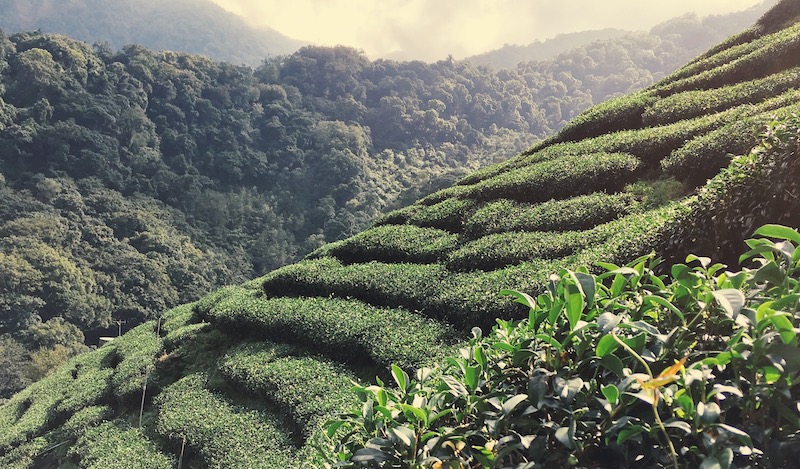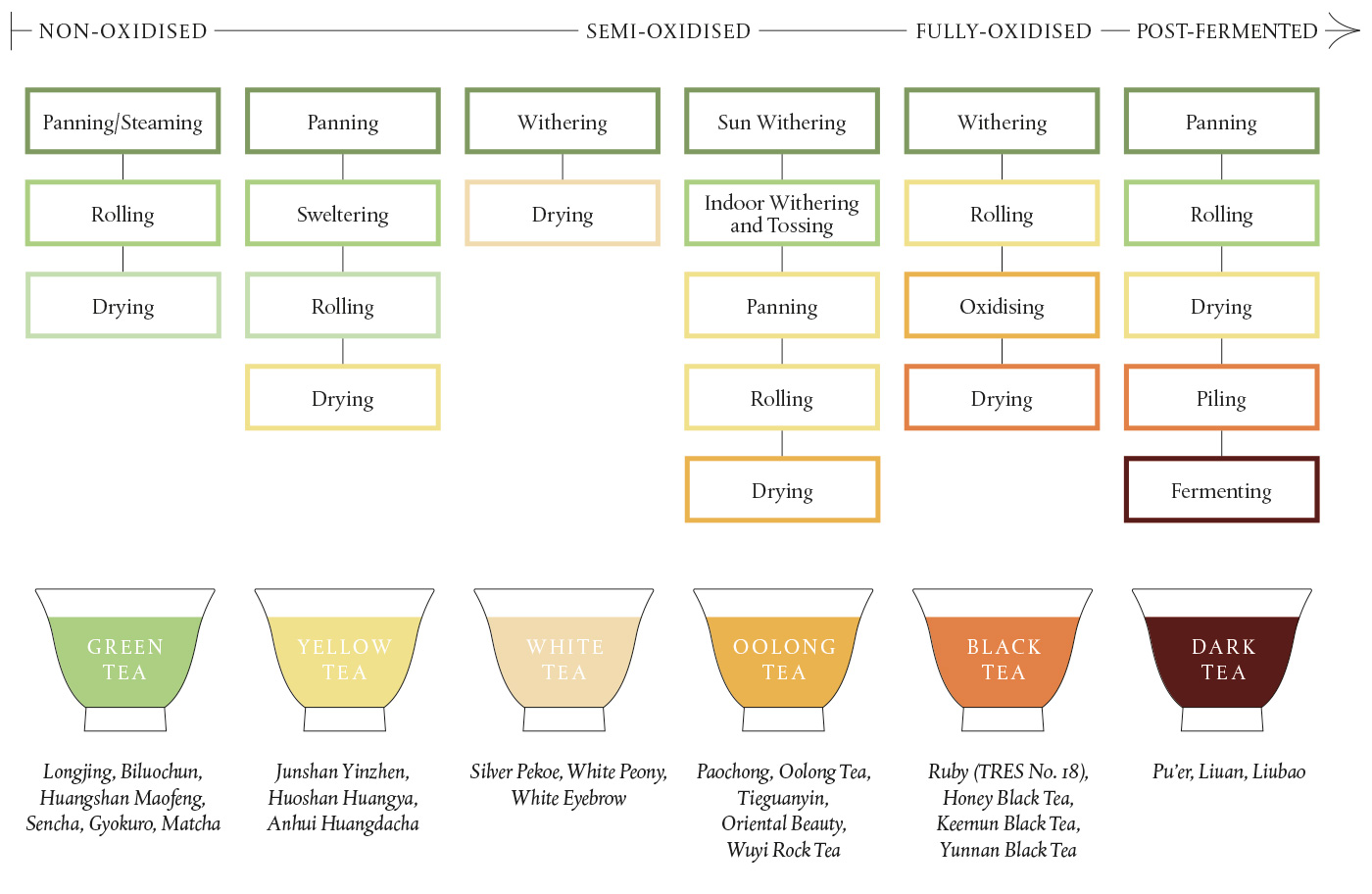The Six Types of Tea
06 OCTOBER 2017 BY RIYANG TEAYARD
Do you know that all teas actually come from the same plant? Tea is generally classified into 6 major types, namely green tea, yellow tea, white tea, oolong tea, black tea, and dark tea. It’s an often-surprising fact that all tea is made from the leaves of the same plant called Camellia Sinensis. Camellia Sinensis is a sub-tropical evergreen plant native to Asia but is now grown across the world.
The manufacture of tea mainly go through several steps – plucking, withering, panning, rolling, oxidising and drying (learn more about each process here). Different types of tea utilise particular steps but the most crucial part to define a tea category is oxidising. Oxidation occurs when the enzymes in the tea leaf interact with air. When leaves begin to oxidise, the colour gradually turns from green to copper and the flavour becomes intensified. Oxidation determines the taste, aroma, colour, richness and even nutrition of the final produce, hence this vital process must be carried out by skilled hands.

Green Tea: Green tea is a non-oxidised tea, its leaves are either pan-fired or steamed right after the leaves have been plucked to prevent the oxidation. The infusion of green tea is typically yellowish green and flavours range from toasty, grassy or fresh vegetable with astringency.
Yellow Tea: Yellow tea is a slightly oxidised tea, this kind of tea goes through the “sweltering” process that results in this unique type of tea bearing the characteristics of yellow leaves with yellow infusion. It keeps the fresh flavour from green tea yet the taste is milder.
White Tea: White tea is also a slightly oxidised tea, the leaves are simply plucked and allowed to wither dry. White tea is characterised by the high content of succulent, whitish, and hairy leaf-buds with a slight greenish tinge. And the bright yellowish green infusion renders delicate and mellow flavour.
Oolong Tea: Oolong tea is a semi-oxidised tea and it’s one of the most time consuming tea to make. The leaves are plucked, withered, pan-fired, rolled and then dried, sometimes certain process is repeated several times. The oxidation level of oolong tea falls between green and black tea. Oolong has a bright yellowish infusion and is rich in long-lasting floral or fruity flavours.
Black Tea: Black tea is a fully oxidised tea and is produced either by the orthodox (withering, rolling, oxidising, drying) or CTC (crush, tear, curl) method. In most cases, CTC method produces leaves of fanning or dust grades that are commonly used in tea bags and orthodox processing results in the high quality loose leaf tea that are considered most valuable teas by connoisseurs. Black tea carries a rich and aromatic flavour with reddish infusion. It is the most consumed tea in the world (accounts for 80%), some countries prefer to add sugar and milk to it while others enjoy its original flavour.
Dark Tea: Dark tea is a post-fermented tea and is completely different from the other five types of tea. The typical dark tea is Pu’er tea and it can be made from green, oolong or black tea. It involves a special “piling” process which nurtures its unique colour, aroma and flavour. Pu’er has a brownish red colour infusion and is well known for its earthy and woodsy aroma in rich taste.
![]()